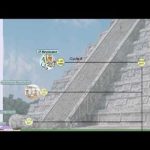Voyager Humanity’s Farthest Journey
From NASA JPL marking the passage of the twin Voyager spacecraft beyond our solar system. We knew we were on a journey of discovery when we launched the Voyager spacecraft, but we had no idea how much there was to discover.
We had a sense that we knew what it felt like to be Magellan or Columbus.
Time after time we were surprised by seeing things that we had not expected or even imagined. From volcanoes erupting from the moon Io to the possibility of a liquid water ocean under the icy crust of Europa. Titan, where we found an atmosphere. Uranus’ small moon Miranda, which had one of the most complex geologic surfaces we’d seen. Even at Neptune, Triton, 40 degrees above absolute zero, even there there were geysers erupting.
It’s the only spacecraft that’s gone by Uranus. It’s the only spacecraft that’s gone by Neptune. Everything we know about those planets we know from Voyager.
To see those first pictures coming in from the outer solar system, for the first time what had been a point of light in the sky was a place.
I really credit the people that designed the mission, both the engineers and the mission planners and scientists because not only did they build an extremely robust, durable spacecraft, but they had the vision to send it on a path such that it could get out into interstellar space and carry a gold record.
And here was this Noah’s Ark of human culture that was being sent to the outer planets and then beyond to wander in the interstellar darkness for a billion years. On Valentine’s Day 1990 Voyager 1 looked homeward. And what did it find? Not the frame-filling Apollo Earth, but, instead, that one-pixel Earth. That’s here. That’s home.
The Voyager spacecraft are in the outer layer of the heliosphere, the giant bubble the sun creates around itself with its supersonic wind. Voyager today is headed for the edge of interstellar space. That’s the space between stars, and it’s filled with material that has been injected by the explosion of stars,matter which came from a particular direction, creating a wind,which has shaped the bubble in which the solar system is surrounded.
Voyager really has changed our view of the solar system. This will be a milestone in space exploration: leaving the solar system,leaving the bubble and entering interstellar space for the first time.
Leave A Reply
You must be logged in to post a comment.









 Paranormal
Paranormal

